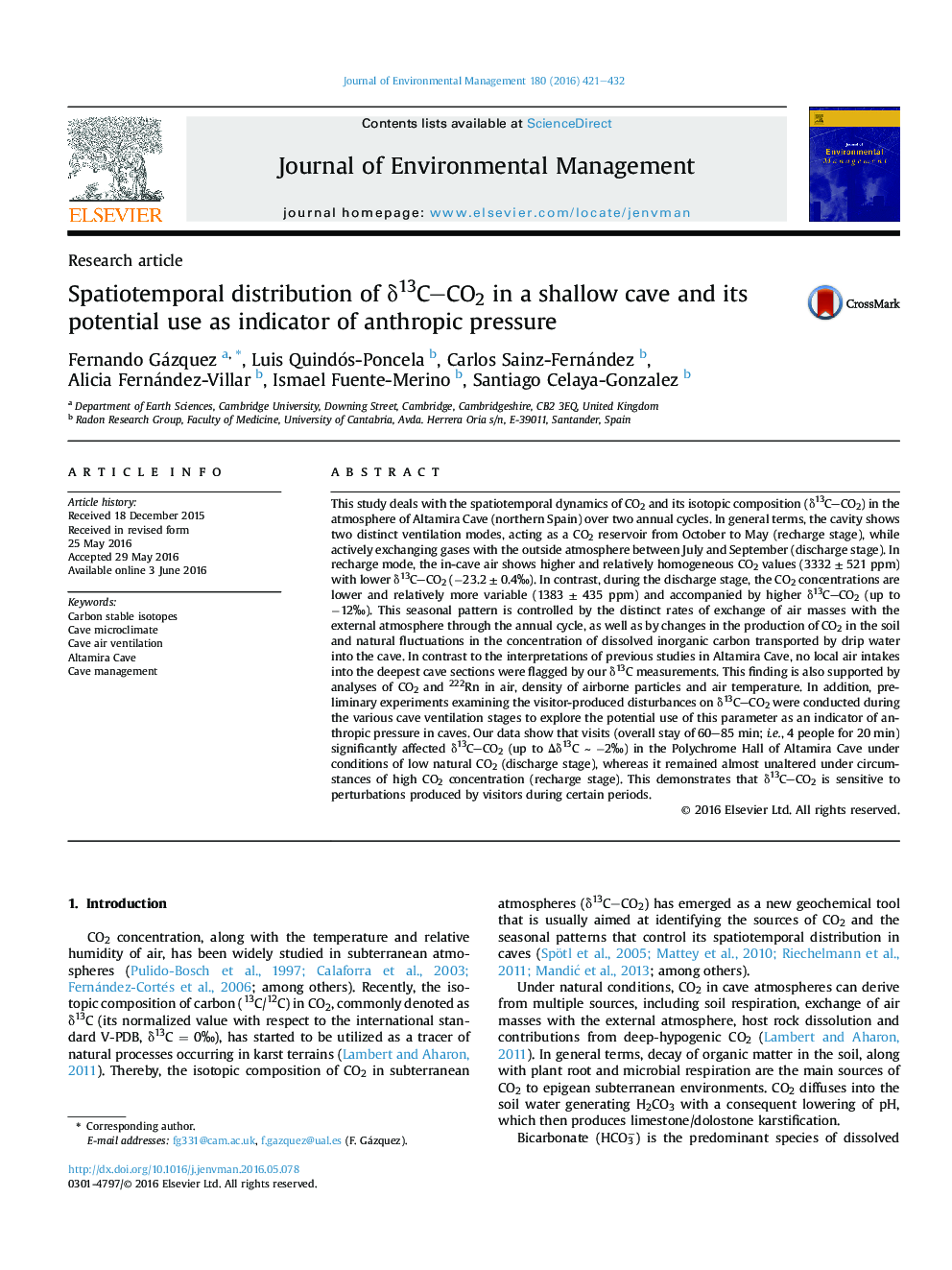| Article ID | Journal | Published Year | Pages | File Type |
|---|---|---|---|---|
| 7480174 | Journal of Environmental Management | 2016 | 12 Pages |
Abstract
This study deals with the spatiotemporal dynamics of CO2 and its isotopic composition (δ13CCO2) in the atmosphere of Altamira Cave (northern Spain) over two annual cycles. In general terms, the cavity shows two distinct ventilation modes, acting as a CO2 reservoir from October to May (recharge stage), while actively exchanging gases with the outside atmosphere between July and September (discharge stage). In recharge mode, the in-cave air shows higher and relatively homogeneous CO2 values (3332 ± 521 ppm) with lower δ13CCO2 (â23.2 ± 0.4â°). In contrast, during the discharge stage, the CO2 concentrations are lower and relatively more variable (1383 ± 435 ppm) and accompanied by higher δ13CCO2 (up to â12â°). This seasonal pattern is controlled by the distinct rates of exchange of air masses with the external atmosphere through the annual cycle, as well as by changes in the production of CO2 in the soil and natural fluctuations in the concentration of dissolved inorganic carbon transported by drip water into the cave. In contrast to the interpretations of previous studies in Altamira Cave, no local air intakes into the deepest cave sections were flagged by our δ13C measurements. This finding is also supported by analyses of CO2 and 222Rn in air, density of airborne particles and air temperature. In addition, preliminary experiments examining the visitor-produced disturbances on δ13CCO2 were conducted during the various cave ventilation stages to explore the potential use of this parameter as an indicator of anthropic pressure in caves. Our data show that visits (overall stay of 60-85 min; i.e., 4 people for 20 min) significantly affected δ13CCO2 (up to Îδ13C â¼Â â2â°) in the Polychrome Hall of Altamira Cave under conditions of low natural CO2 (discharge stage), whereas it remained almost unaltered under circumstances of high CO2 concentration (recharge stage). This demonstrates that δ13CCO2 is sensitive to perturbations produced by visitors during certain periods.
Keywords
Related Topics
Physical Sciences and Engineering
Energy
Renewable Energy, Sustainability and the Environment
Authors
Fernando Gázquez, Luis Quindós-Poncela, Carlos Sainz-Fernández, Alicia Fernández-Villar, Ismael Fuente-Merino, Santiago Celaya-Gonzalez,
